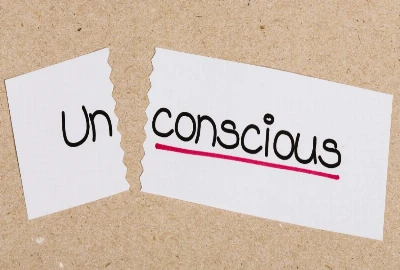Social Credit by Design: When UX Nudges Become Behavior Control

The Psychology Behind Every Click
User experience (UX) design isn’t just about aesthetics—it’s about influence. Every color choice, notification sound, and swipe gesture is designed to elicit a reaction. Companies have learned that subtle psychological cues—known as nudges—can direct user behavior more effectively than overt commands. A nudge can be as simple as a “like” button triggering dopamine release or as complex as a reward-based notification system keeping users addicted to engagement. These micro-interactions collectively build digital environments that not only respond to users but also reshape their behavior over time.
From Convenience to Conditioning
UX originally sought to simplify digital interactions. But as platforms evolved, so did their intentions. The same principles that make online shopping frictionless are now used to guide people toward specific outcomes: staying longer on apps, sharing more personal data, or even adopting certain worldviews. This shift turns design from a service into a system of control. The user experience ceases to be about ease—it becomes about subtle persuasion.
The Birth of Digital Obedience
When users unconsciously follow patterns reinforced by UX design—checking notifications at specific times, responding to engagement triggers—they become conditioned participants in a feedback loop. The screen becomes both a tool and a teacher, rewarding certain actions while discouraging others. It’s not far from how social credit systems operate, assigning invisible points for “good” digital behavior and silently penalizing deviation.
The Gamification of Everyday Life

Reward Loops and Instant Gratification
Gamification—applying game mechanics to non-game environments—has become a powerful behavioral design tool. Likes, badges, progress bars, and streaks turn ordinary actions into mini-victories. This taps into the human desire for achievement and validation, subtly training users to conform to specific patterns. Fitness apps reward consistency, social platforms celebrate engagement, and financial apps “congratulate” you for spending wisely. But behind these dopamine hits lies a deeper question: who decides which behaviors are worth rewarding?
Points, Badges, and Behavioral Engineering
When a design system assigns visible or invisible “scores” to user actions, it becomes a digital analog of social credit. Consider Uber ratings, Airbnb reviews, or Amazon seller reputations—these feedback loops dictate access and trust in online ecosystems. Even small deviations from platform expectations can result in de-prioritization or exclusion. Over time, gamified design begins to govern users, not just entertain them.
The Soft Architecture of Control
Unlike authoritarian systems that enforce rules openly, gamified UX exerts control quietly. Users believe they’re participating freely, yet every interaction is shaped by incentive structures crafted by designers and data scientists. This makes the digital realm a soft architecture of control—subtle, persuasive, and difficult to resist. In effect, gamification has turned digital citizenship into a perpetual performance, where compliance earns applause and deviation costs visibility.
From China’s Social Credit to Silicon Valley’s Design Ethos

The Parallel Between Policy and Product Design
China’s state-run social credit system has been widely discussed as a tool of surveillance and control. Citizens are rewarded or penalized based on behavior, from financial transactions to online speech. While Western societies often view this as dystopian, many digital ecosystems are implementing similar structures under the guise of UX design and data personalization. Every app that tracks engagement, filters visibility, or modifies pricing based on reputation is essentially implementing a soft social credit mechanism.
Algorithmic Morality and Reputation Systems
Platforms like Reddit, TikTok, and YouTube rank content based on “community behavior,” while rideshare and delivery services rate users and workers alike. These algorithms don’t just reflect society—they shape it. When a digital reputation determines your credibility, employment opportunities, or access to services, UX design becomes moral architecture. The interface decides who gets rewarded, who gets shadowbanned, and who disappears entirely from digital visibility.
The Western Version of Social Scoring
Unlike centralized social credit systems, Western-style social scoring is decentralized and corporate-run. It’s embedded in rating systems, recommendation algorithms, and behavioral targeting tools. Instead of the government, tech platforms decide the rules of participation. The result is the same: a society subtly trained through feedback loops to behave in ways beneficial to the system’s goals—whether that’s engagement, profitability, or ideological conformity.
Algorithmic Nudging and the Illusion of Choice

The Invisible Hand of Personalization
Every personalized recommendation, from Netflix shows to Instagram reels, is driven by algorithms designed to maximize engagement. Personalization appears to empower users—offering content tailored to their interests—but in reality, it constrains them within behavioral patterns that are predictable and profitable. Over time, personalization limits exposure to new ideas, creating algorithmic “comfort zones” that reinforce specific worldviews.
The Design of Desire
Modern UX doesn’t just respond to your preferences—it shapes them. When your digital environment continuously presents certain aesthetics, lifestyles, or opinions, it begins to construct your perception of normality. This is behavior design on a cultural scale. It determines not only what users want, but what they believe they should want. The illusion of choice hides the underlying manipulation.
How Autonomy Becomes Automation
The more users rely on algorithmic curation, the less independent their decision-making becomes. Whether it’s autoplay features, recommended purchases, or auto-complete suggestions, UX nudges users toward default behaviors. The convenience of automation often replaces the complexity of critical thought. What begins as ease of use gradually morphs into behavioral predictability—a digital version of obedience.
Ethics and Responsibility in Behavior Design

Designers as Digital Gatekeepers
UX designers today hold extraordinary influence. Their decisions shape how billions of users interact, think, and even feel. With this influence comes responsibility. Every “nudge” carries ethical implications: is it guiding users toward empowerment, or exploiting their impulses for engagement metrics? As behavior design grows more sophisticated, the ethical burden on creators intensifies. Transparency, consent, and autonomy must become central to design practice.
Dark Patterns and Manipulative UX
Dark patterns—design tricks that manipulate users into actions they didn’t intend—are the shadow side of UX. From auto-enrolled subscriptions to confusing privacy settings, these patterns exploit cognitive biases. They erode trust, limit user control, and normalize manipulation as a design strategy. When dark patterns intersect with data-driven incentives, the result is a system that profits from confusion and compliance.
Toward Ethical UX and Digital Well-Being
Ethical UX design should prioritize user autonomy, informed consent, and psychological well-being. Techniques like calm technology, friction by design, and ethical gamification can help create healthier interactions. By introducing intentional pauses, clearer data permissions, and opt-out options, designers can build systems that respect human agency instead of exploiting it. The future of UX depends on whether designers can resist the temptation of behavioral control for corporate gain.
Reclaiming Digital Agency: How Users Can Resist Behavioral Control

Awareness as the First Step
Recognizing how UX and algorithms influence behavior is the foundation of digital freedom. Users should question why apps make certain design choices: Why is a button red? Why are notifications persistent? Why does scrolling feel endless? Awareness transforms passive consumption into active engagement. Once you see the design patterns, you can begin to resist them.
Rebuilding Healthy Digital Habits
Practical steps can restore user autonomy: disabling non-essential notifications, using privacy-focused browsers, or setting time limits on addictive apps. Tools like content blockers, minimalist interfaces, and mindful tech practices help reestablish control over one’s digital environment. The goal isn’t to reject technology—it’s to use it consciously.
A Call for Digital Transparency
As users demand more ethical design, companies will be forced to respond. Transparency reports, explainable algorithms, and user-controlled recommendation settings are emerging movements toward accountability. Just as sustainability reshaped business ethics, digital transparency could redefine design ethics. Users who understand the cost of behavioral manipulation can push for systems that prioritize empowerment over control.




